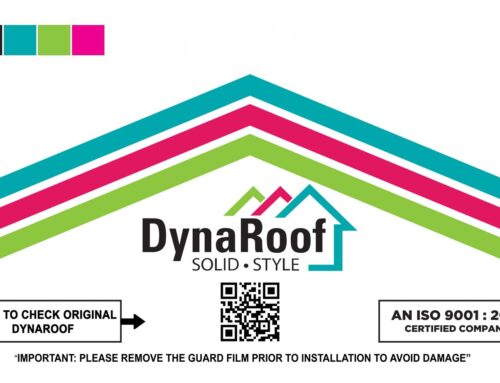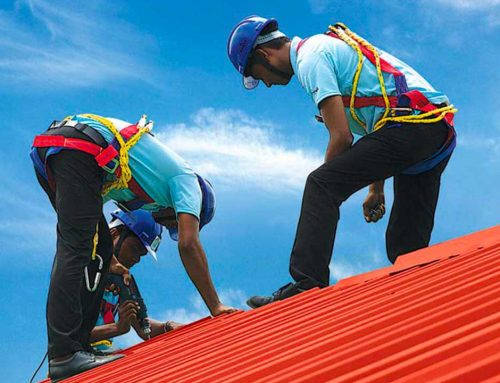In this day and age, it’s more important than ever to be eco-friendly and consider the environment in all aspects of our lives. This includes when we’re planning to convert our rooftop designs into something that is more sustainable. Here are some things you should keep in mind while making your plans!
The Process of Converting Rooftop Designs

Things to consider while converting your rooftop designs
There are many things to consider when converting your rooftop designs. The following is a list of some key factors:
1. The type of roof you have: There are many different types of roofs, and each one has its own set of challenges and considerations. Make sure you know what type of roof you have before starting the conversion process.
2. The pitch of your roof: The pitch, or angle, of your roof will impact the conversion process. A steeper pitch will be more difficult to convert than a shallower pitch.
3. The size and shape of your roof: The size and shape of your roof will also influence the conversion process. A larger or more complex roof will take longer to convert than a smaller or simpler one.
4. Your budget: Be realistic about the budget for your project. Roof conversions can be expensive, so make sure you have the necessary funds available before starting the process.
5. Your timeline: Make sure you have a realistic timeline for your project. Depending on the complexity of your project, it could take several months or even years to complete.
By keeping these factors in mind, you can ensure that your rooftop conversion project goes smoothly and according to plan.
What to Consider While Converting
Assuming you’ve already decided to convert your rooftop designs, here are a few things you should keep in mind while doing so.
1. Cost – This is probably the most important factor to consider. How much will the conversion cost? Is it worth it?
2. Weather – What kind of weather does your area generally have? If it’s mostly sunny, you’ll probably want to take advantage of that and go with a solar panel setup. If it’s mostly cloudy, wind power might be a better option.
3. Space – How much space do you have to work with? If you have a large rooftop, you can probably go with a more elaborate setup. If you’re limited on space, you’ll need to be more creative with your design.
4. Aesthetics – This is entirely up to personal preference, but keep in mind that your rooftop design will be visible to everyone who sees your home. Make sure it looks good!
5. Maintenance – Once you’ve converted your rooftop, you’ll need to maintain it. This means regularly cleaning and inspecting your equipment to make sure everything is working properly.
The Different Types of Rooftops
There are many things to consider when designing or converting a rooftop. But one of the most important decisions will be what type of roof you want. There are four main types of roofs: flat, gabled, hip and mansard.
Flat roofs are the most common type in urban areas. They’re easy to construct and are less expensive than other types of roofs. Flat roofs also have the added benefit of providing extra space on top of the building that can be used for things like HVAC units, solar panels or even a garden.
Gabled roofs are characterized by two sloping sides that come together at a ridge in the middle. Gables can be either symmetrical or asymmetrical. This type of roof is popular because it’s attractive and provides good ventilation.
Hip roofs have four sloping sides that all come together at the top. Hip roofs are strong and stable, making them ideal for areas with high winds or heavy snowfall. They’re also popular because they offer more headroom than other types of roofs.
Mansard roofs are characterized by two sloping sides with a steep slope in the middle. Mansard roofs were once popular because they allowed for extra living space in the attic. Today, they’re mostly used for aesthetic purposes.
The Cost of Conversion
Converting your rooftop design can be a great way to improve your home’s curb appeal and increase its value. However, it’s important to keep in mind that there are costs associated with any type of home renovation. labor and materials, you should also factor in the cost of permits, which can vary depending on your municipality.
Before starting any work on your rooftop design, it’s important to have a clear budget in mind. This will help you avoid any surprises down the line and ensure that you stay on track with your project.
How to Convert Your Rooftop
There are many things to consider when you’re converting your rooftop into a usable space. Here are a few key points to keep in mind:
1. Make sure the roof is structurally sound. This is obviously the most important consideration – you don’t want your roof to collapse!
2. Insulate the space properly. This will help keep it warm in winter and cool in summer, making it more comfortable to use year-round.
3. Choose the right materials for the flooring and walls. You’ll want materials that can withstand the elements and stand up to wear and tear.
4. Consider adding some type of covering or shelter. This will protect you from the sun and rain, and make the space more enjoyable to use.
5. Don’t forget about furniture and décor! Just because it’s an outdoor space doesn’t mean it can’t be stylish and inviting.
Resources
If you’re planning on converting your rooftop into a usable space, there are a few things you’ll need to take into consideration. First, you’ll need to make sure that the structure of your roof can support the weight of whatever you plan on putting up there. Next, you’ll need to think about ventilation and insulation to make sure that the space is comfortable to use. Finally, you’ll need to consider lighting and electrical needs to make sure that the space is usable during the day and at night.






Leave A Comment